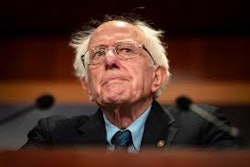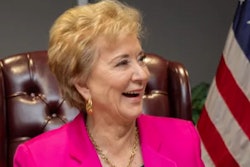Unlikely Candidates
Community colleges are filling high-level vacancies by going outside the higher ed community
By Ann Farmer
The management and leadership skills Dr. Carole A. McCoy developed in big business and hospital administration closely matched the requirements for Anne Arundel Community College’s opening for a chief of learning systems and technology. Nonetheless, she was put through a rigorous interview process during which her “nontraditional” work experience was repeatedly called into question.
“I was asked at least 30 times about how I thought I could be successful without having a background in higher education,” recalls McCoy, who proved so proficient at the job that she has since been promoted to vice president for learner support services. “I think there is a sentiment in higher education that you can’t understand higher education if you haven’t worked in it.”
Boomer Vacuum
That attitude, while still pervasive, is slowly changing as the need to fill high-level vacancies at community colleges overcomes their tradition of hiring from within. “There is a definite shortage of people applying for president and senior-level positions in community colleges,” says Dr. Barbara Viniar, executive director of the Institute for Community College Development, a State University of New York/Cornell University part-nership. Viniar points to the large number of retiring baby boomers as the primary reason for the vacuum.
A SUNY study indicates that an anticipated 40 percent of community college presidents will have retired between 2001 and 2007. And whereas 80 to 100 applicants used to respond to each job advertisement for a college presidency, “now we’re seeing 40 to 50 applicants,” Viniar says.
Search committees are now extending their reach to increase the applicant pool. Among the new target sectors is the military. According to Viniar, retiring senior officers, who boast extensive leadership training and already have a comfortable benefits package tucked away, are showing consistent interest. The nonprofit sector, including government and hospital employees, has also proven to be a fertile hunting ground for the committees.
But not surprisingly, search committees are having the hardest time luring people away from the private sector, where earning potential is significantly greater. For instance, it wasn’t until after the dot-com bubble burst and Arthur Szu-Tu, a former consultant for IBM, was out of work for nine months that he began considering a community college job instead of returning to the corporate world.
“I was thinking, I really don’t have a burning need to climb the career ladder,” says Szu-Tu, 56, who ended up applying, along with 400 others, for the position of chief information officer for Onondaga Community College in Syracuse, N.Y.
Szu-Tu won the job and quickly went to work, applying 32 years of information technology experience to revamping Onondaga’s entire IT infrastructure. He also brought along his corporate management style, approaching issues in a more aggressively solicitous fashion and viewing the students and faculty as “end-users,” as they are often described in business jargon. He says the response was positive.
“People would say, ‘No one has ever come into my office and asked what I wanted before,’” he says.
Onondaga’s president, Dr. Debbie L. Sydow, says Szu-Tu has turned the school’s IT system into the envy of the SUNY instructional team. She also credits his political savvy for helping bring it about.
“Arthur was highly effective in building coalitions,” she says. “There’s always a certain amount of suspicion when a person enters from the corporate world,” she adds, explaining that one of the biggest cultural hurdles for those coming from nonacademic backgrounds is acclimating to the decision-making process.
“In higher education, we’re very inclusive,” says Sydow, contrasting the shared governance that takes place in higher education with the hierarchical structure present in the private sector or the military. Community college board meetings and budgets are also more transparent and open to scrutiny and debate. “Decisions need input from the stakeholders,” she says. “It adds value in the long run.”
A Fresh Eye
The very fact that some new hires are coming from such radically different work environments can give them an edge in terms of questioning the status quo and contributing fresh ideas. For example, Sydow also hired a chief financial officer who had previously worked in public utilities. One of the initial tasks he proposed was to analyze the school’s tuition rates and their impact on students. “He can translate and look more objectively than us,” says Sydow. “We have more fear of out-pricing someone.”
Two years ago, Dr. Stewart Sutin became president of the Community College of Allegheny County in Pittsburgh after 29 years in international commercial banking. When the board of trustees first approached him, he was a senior vice president for Mellon Financial Corporation and not looking for a job change. But he’d always felt a moral obligation to give back to the community, even volunteering his time on weekends to mentor students with developmental problems. His concerns for homeless youth and the stagnating economic conditions in southeast Pennsylvania helped spur him to take on the challenge of leading the college.
Sutin readily admits that the transition has been rough at times. He’s learning, for instance, to be less concerned with the business philosophy of “optimum efficiency at all times.” But at the same time, he says, “We need to achieve efficiencies outside the classroom so we can put our resources into the classroom.” He described how he saved the school $500,000 by reorganizing and offering three early retirements. With those savings, he was able to hire 15 new full-time faculty members.
According to American Association of Community Colleges president George R. Boggs, the association welcomes the “outsiders” views that this new batch of leaders provides. “Most of them seem to care about making a difference,” he says. He notes, however, that, “It’s important to make sure that new leaders or employees understand the unique mission of community colleges,” referring to the college’s open admissions policies and their need to be responsive to the needs of the community.
Making a Difference
Many of those who have taken the leap from big business say it is the very mission of community colleges that attracted them.
Szu-Tu took a 35 percent cut in pay. But he says, “I can feel good about what I’m doing. Here I see a lot more passion and integrity and desire to help others.”
McCoy also made a conscious decision to work for an organization with a strong social mission.
“I knew I didn’t want to go back to helping another big company make money,” she says. “I was thinking of organizations and the services they provide rather than the revenue they generated.”
© Copyright 2005 by DiverseEducation.com


















